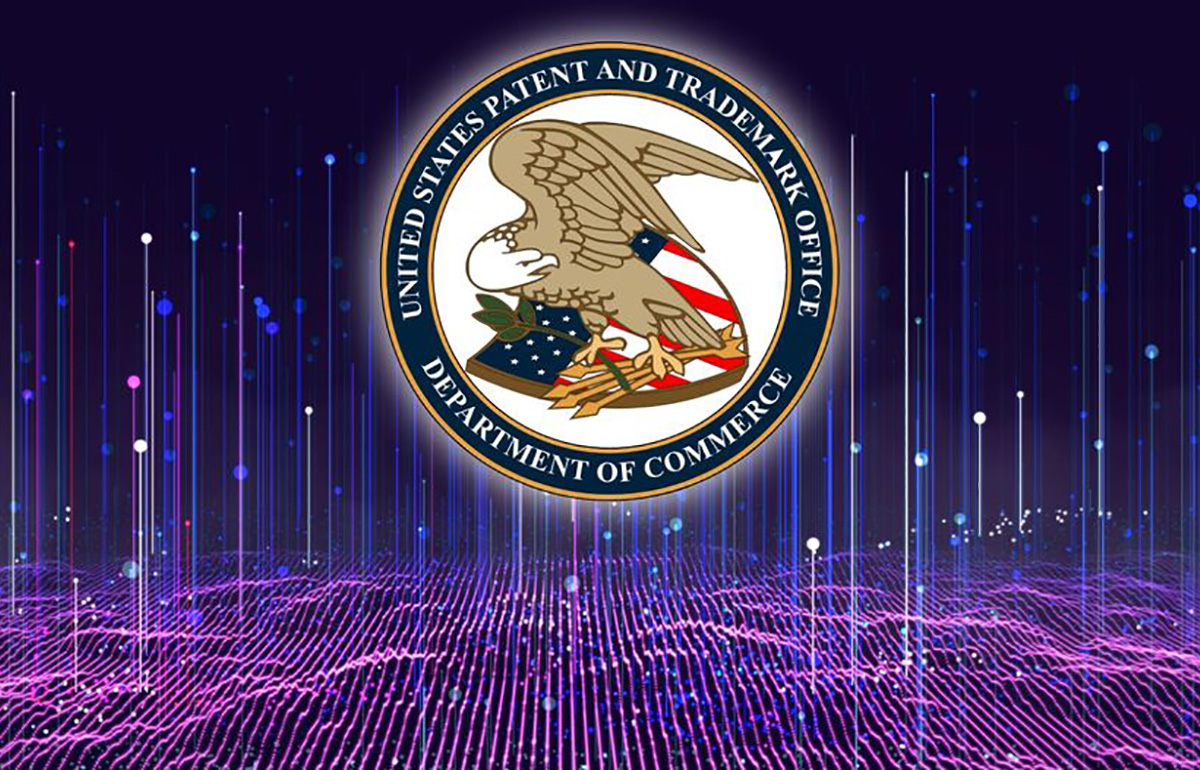IP Protection Consulting
Informed Decision-Making
EXPERTISE IN LOCAL NUANCES & INTERNATIONAL REGULATIONS
PROTECTING INTANGIBLE ASSETS
In today’s rapidly evolving global economy, intellectual property (IP) is a cornerstone of innovation, competitive advantage, and economic growth. Protecting these intangible assets — ranging from groundbreaking inventions and distinctive brands to creative works and confidential business information — is paramount for individuals, businesses, and nations alike. The landscape of intellectual property is complex, influenced by diverse legal frameworks, technological advancements, and shifting market dynamics. Navigating this intricate environment requires specialized expertise and a deep understanding of both local nuances and international regulations.

MAXIMIZE INTELLECTUAL CAPITAL
Our firm provides comprehensive international consulting services dedicated to intellectual property protection. We empower innovators and enterprises worldwide to safeguard their valuable IP assets, mitigate risks, and maximize their intellectual capital. Through strategic guidance, in-depth analysis, and proactive solutions, we ensure that your intellectual property is not only protected but also leveraged for sustainable success in the global marketplace.

INFORMED DECISION-MAKING
The following outlines key industry insights, deep data analysis, and a ranking of market segments worldwide, providing a foundational understanding of the current state and future trajectory of intellectual property protection, and aims to serve as a valuable resource for our clients and partners, reflecting our commitment to informed decision-making and excellence in IP consulting.

THE FOUR PRIMARY TYPES OF IP PROTECTION
Intellectual property (IP) refers to creations of the mind, such as inventions, literary and artistic works, designs, symbols, names, and images used in commerce. Protecting your IP is crucial because it allows you to gain value from your creations, foster innovation, and maintain a competitive edge.
There are four primary types of IP protection, each safeguarding different aspects of creativity and innovation:
1. Patents
What they protect: New, useful, and non-obvious inventions like processes, machines, articles of manufacture, or compositions of matter. There are also specific patents for plants and design elements.
How to obtain protection: You must file a patent application with the United States Patent and Trademark Office (USPTO).
Duration: Utility and plant patents last for 20 years from the filing date, while design patents last for 15 years. Maintenance fees are required periodically.
2. Trademarks
What they protect: Words, phrases, symbols, designs, sounds, scents, or even distinctive product packaging that identifies the source of goods or services and distinguishes them from competitors.
How to obtain protection: While common law rights arise from use in commerce, federal registration with the USPTO provides significant advantages.
Duration: Trademark rights can last indefinitely as long as the mark is in use and renewal fees are paid (typically every 10 years).
3. Copyrights
What they protect: Original works of authorship fixed in a tangible medium, including literary, dramatic, musical, artistic, and certain other intellectual works. This covers books, music, movies, software, architectural drawings, and more.
How to obtain protection: Copyright protection automatically arises upon the creation of the work, but federal registration with the U.S. Copyright Office is highly recommended.
Duration: For works created after January 1, 1978, protection generally lasts for the life of the author plus 70 years.
4. Trade Secrets
What they protect:Confidential business information that provides a competitive advantage and is actively kept secret. Examples include formulas, manufacturing processes, customer lists, or proprietary technology.
How to obtain protection: Protection for trade secrets relies on maintaining their secrecy through reasonable efforts, such as Non-Disclosure agreements (NDA’s) and restricting access to information.
Duration: Trade secrets can theoretically last forever as long as their confidentiality is maintained.

THE GLOBAL IP LANDSCAPE
The intellectual property landscape is dynamic and increasingly complex, presenting both significant opportunities and formidable challenges. As innovation continues to accelerate globally, effective IP protection and strategic management are no longer merely legal necessities but critical drivers of business success and national economic growth. Our commitment to providing cutting-edge international consulting services ensures that our clients are well-equipped to navigate this intricate environment, safeguard their valuable assets, and capitalize on emerging opportunities.
By understanding the global market dynamics, anticipating key industry trends, and leveraging deep data analysis, we empower businesses to make informed decisions that strengthen their competitive position and foster sustainable innovation. The insights we deliver underscore the importance of a proactive and comprehensive approach to IP protection, ensuring that intellectual capital translates into tangible value in the global marketplace.

VISIT OUR BLOG TO DISCOVER MUCH MORE
Here’s a look at our ’Intellectual Property Services Market Overview (2025)’ which closely examines the global market dynamics, anticipating key industry trends, and leveraging deep data analysis to align with international IP protection and enforcement objectives.
CONNECT WITH US
Our IP Protection team is highly experienced. To learn more about our process and how we can help you with your IP Protection needs, connect with us today. We’d be happy to schedule a free consultation right away.
BOOK YOUR FREE CONSULTATION
HAVE SOME QUESTIONS?
A. IP laws allow your business to claim ownership over, and derive value from, its intangible creations. For instance:
- You can license your IP rights to third parties in exchange for licence fees or royalties
- You can prevent competitors from using your IP rights (e.g. stop them from using a confusingly similar brand name, or stop them from using your software without permission)
- If you are trying to attract investors or are intending to sell your business, IP rights can be an important component of your business’s value (in some cases, a business’s IP rights can be worth more than its physical assets!)
These are some of the important points to consider when entering a new market:
- Which IP rights you are intending to use in that market (e.g. you may intend to sell your products under one brand in Country A, but under another brand in Country B);
- Whether the use of your IP in the new market will conflict with the rights of an existing competitor in that market;
- Your options for protecting your IP rights – for instance, registering your copyright is an option that is available to you in the US, but not, for example, in Singapore; and
- The costs of seeking protection for your IP rights in that new market
A. Yes, you can.
As there are stringent requirements to be fulfilled before one can obtain patent protection, there are many ideas which can’t be protected under the patent regime. However, this does not mean that these ideas can’t be protected as a different type of IP. For example:
- If an idea relates to the creation of software or multimedia content, it could be protected by copyright;
- If an idea relates to know-how, business plans, or manufacturing processes, it could be protected as a trade secret
A. Intellectual property (IP) rights are intangible rights that are created by the human intellect. There are numerous categories of IP rights: the most common ones are trademarks, copyright, patents, designs and confidential information / trade secrets.
IP regimes seek to provide IP creators with property rights over their intellectual creations: this gives them an economic incentive to create more of these creations, which in turn benefits society.
A. The owner of a registered patent has a monopoly over the invention that is protected by the patent. This allows the owner to prevent third parties from using the invention without permission. If a third party uses the invention without permission, the patent owner is entitled to sue for (among others) an injunction restraining the third party from using the invention, as well as damages in respect of the infringement.
A. Intellectual Property encompasses any creation of the human mind and how such a creation can be legally protected. Some forms of intellectual property include inventions (patents), literary and artistic works, symbols, names, images and design which are used in commercial activities.
A. It’s never too early to protect your IP. IP registration is time-sensitive. Generally, you will not be able to register your IP if there is someone who has registered something identical or similar before you.
You may not have the budget to register / seek protection over all your IP rights from day one, but that should not stop you from developing an IP strategy and planning for registration / greater protection when you have the financial resources to do so.
There is often more than one way to protect an IP right and it does not always have to be costly or involve registration (e.g. if you do not have the funds to seek patent registration, it is possible for you to protect your invention as a trade secret in the meantime).
A. Trade secrets are a type of confidential information that your business can use to obtain a competitive edge or advantage. Some examples of information that could be trade secrets are:
- Recipes
- Manufacturing processes
- Supplier and customer lists
- Business plans
- Sales and distribution methods
At the risk of sounding obvious, trade secrets need to be kept secret / confidential in order to be protected. Once a trade secret is disclosed to the public, it loses its value as it becomes public knowledge.
These are some of the ways in which you can maintain the secrecy and confidentiality of your trade secrets:
- Make sure that the people in your organisation respect the confidentiality of trade secrets: e.g. include confidentiality obligations in their employment agreements, conduct regular training to remind them of the importance of keeping trade secrets confidential
- Adopt physical and technical security measures to prevent information from being accessed or disclosed without authorisation
- Only disclose trade secrets to your employees, agents, and contractors on a need-to-know basis; when disclosing trade secrets to persons outside your organisation, have them sign NDAs to preserve confidentiality
A. The answer is 100% yes.
As mentioned above, having an IP portfolio allows you to license your IP rights to third parties, and also adds value to your business (which may be relevant for potential investors / buyers). These are benefits that will accrue to your business without you having to sue anyone.
In the event that you need to enforce your IP rights, it does not necessarily need to be done in a costly manner. IP disputes are often resolved without going to court – infringers may back down after receiving a sternly worded letter informing them of your IP rights, or may agree to enter into a settlement with you to resolve the dispute. These options would not be available to you if you did not have those IP rights in the first place – hence showing the importance of creating and maintaining your IP portfolio.
A. It really depends what you want to do.
Legal costs for IP-related matters can range from a few hundred dollars (e.g. to conduct a few IP searches) to millions of dollars (e.g. for a complex patent infringement case spanning multiple countries).
The correct question to ask is whether incurring those costs to protect / enforce your IP rights is cost-efficient. It would make sense to spend $1m on pursuing a patent infringement claim if the value you will get from a favourable decision far exceeds that amount.
A. If you have made a tasty and valuable recipe, it can be protected as intellectual property. Thus, if you do not want the recipe to be made public, it can be registered as a trade secret. If you want the whole world to savour this recipe as much as you do, you can add it to a cookbook and maintain the copyright.
A. Before going to market, you need to make sure that your brand name is available to be registered. The next step is to decide whether you want to operate on the international market. There are different regulations depending on your territory. Finally, make sure you register the trademark in the combined form (name & logo).
A. This depends on a number of factors including your budget, how familiar you are with the IP regime, and the extensiveness / complexity of your IP portfolio. This is a (non-exhaustive) list of scenarios in which you should probably engage a lawyer:
- If you are dealing with IP where technical expertise is needed (e.g. drafting a patent application)
- If you have a large number of IP applications / registrations to manage (e.g. a global trademark portfolio)
- If you are negotiating an IP-related contract and you are not familiar with the terms and conditions in the contract
- If you are commencing legal action against an infringer or if you have to defend an infringement claim
A. It is extremely difficult to prevent someone from copying an idea or a concept – unless you protect certain aspects of it in a more tangible form by way of registration of Intellectual Property (IP) rights (such as patents, trademarks or design rights), using appropriate notices (such as the © symbol) or through contracts (such as licensing agreements). These will place you in a much stronger position to enforce your rights against infringers.
A. It is prudent to have a non-disclosure agreement or NDA put into place before revealing too many details of your idea to third parties.
On a practical note, it can be useful to assess and work out what level of detail you wish to disclose without an NDA in place at the outset. You could talk about your idea in general terms so that it is enough to generate some interest, but not go into too much detail that it reveals too much. In other words, show what something does but not how you achieved it.
A. Based on conversations with a number of investors, many have said that they see hundreds of companies per month, and if these businesses all asked them to execute NDA’s, then it just wasn’t feasible nor practical to review and execute multiple documents. Where investors see lots of ideas, there is a commercial risk in them executing NDA’s and a reputational risk if they did execute and subsequently breached them.
For example, if company A fails on a product, but company B succeeds with an identical product in which an investor is vested, then that investor could possibly be open to a claim by company A, alleging that the investor passed the idea on to company B, when that isn’t necessarily the case.
Ultimately, as a business, you need to assess the situation and ask ‘what is our risk?’ You need to be able to talk about the business in order to get funding. And what are the chances of an investor stealing your idea? Usually a business will have done a lot of ground work which can take years, and investors won’t necessarily have the time and resources to exploit the same idea silently or quickly.
In particular, you should be careful about how much information you disclose if you have applied for a patent, or else, the patent could be invalidated if the information is released into the public domain.
A. The first thing to do is to assess which IP your business owns, otherwise you can’t manage and protect it from damage or loss; and if you don’t manage it, you can’t make money from it!
It is important to note that registered IP rights are only worth something if you do something with those rights. They have to be commercially exploited to add value. For example, is there a need for your new mobile app? It could be scientifically interesting, but this doesn’t mean its useful or viable. Is there a big enough demand or market for your product? Is your offering viable in terms of the production costs vs. the price a consumer is willing to pay? There will be many commercial factors to consider. The methods of commercialising your IP and the best approach to use can vary, and can mean for example, that you develop a product yourself from start to finish, or you could sell or licence your IP rights to someone who has the resources and contacts to do it better or faster. You could develop a system or distinctive way of running your business and then look to roll it out as a franchise. Or you could collaborate with others to pool your skills and resources to develop and sell something amazing.
Once the IP has been exploited and your products or services are out there in the market, it is important to monitor that market and keep an eye on the competition and on anyone potentially infringing your IP rights. If this happens, then you will wish to enforce those rights.
It is critical to have an IP strategy in place which aligns with your overall business strategy, and if this is in place and clear from the outset, then it should help your chances of business success.
A. In general, IP rights are territorial. This means that you would need to protect or register your IP rights in those countries in which you wish to sell your products or services. You may also want to consider protection in those countries through which your products might pass on their way to you, if they are produced overseas.
There are a number of treaties in place and methods of applying for registration of IP rights so that you can obtain protection in multiple countries by way of a single application. For example, with the EU trademark system, you can apply for an EU wide trademark which covers all member states (this now excludes the UK following Brexit). This can help to streamline the costs and process for those unfamiliar with registering their IP rights.
A. There are several ways in which the rights held by a natural or legal person can be transferred. Among the most common situations are the cession (agreement according to which the holder assigns the property rights in exchange for a remuneration) and the license (contract by which only the right to use the creation is disseminated).
A. Whether you are in the ideation phase or have an operational business, it is advisable to consider an intellectual property strategy. It is best to think long-term to rule out any problems you may encounter during the development of your business.
A. In short, an intellectual property strategy entails an audit of the intellectual property prior to ownership (be it a trademark, patent, industrial design, copyright or a trade secret). Beyond this, an IP strategy establishes the efficiency of using a certain type of intellectual property, offers advice on the feasibility of measures aimed at maximizing the benefits derived from holding such rights, and more.
A. Every application is built on source code, and this must be protected in order to avoid any possible copyright infringement. The basic rule regarding source code is that it should not be open source, which would mean that the source code could be redistributed and modified for free. By protecting the source code behind an application, you can be sure that your idea is safe, that no one else uses it to their own commercial advantage. Source code falls into the copyright category and can be protected. Unlike trademarks, copyright is covered by the Berne Convention regardless of the country in which you file for registration so long as that country is a party to the convention.
A. A website can be protected in two ways. The first way is by registering the internet domain as a word mark, and the second way is by registering the site design as an industrial design.
A. Intellectual Property Rights must be clearly delimited and established at the very beginning of the business. Nobody wants an employee to take all the company’s intellectual property rights with them when they leave. An agreement to transfer IP rights to the company is the ideal solution.
A. In general, IP rights are territorial. This means that you would need to protect or register your IP rights in those countries in which you wish to sell your products or services. You may also want to consider protection in those countries through which your products might pass on their way to you, if they are produced overseas.
There are a number of treaties in place and methods of applying for registration of IP rights so that you can obtain protection in multiple countries by way of a single application. For example, with the EU trademark system, you can apply for an EU wide trademark which covers all member states (this now excludes the UK following Brexit). This can help to streamline the costs and process for those unfamiliar with registering their IP rights.

Let’s Create An Exciting Franchise Arrangement For Your Business
Our aim is to ensure that everything is seamless for our clients so they may grow their enterprise operations without having to deal with the sales and marketing aspects.

Copyright © 2025 Brand Factory Franchising, Inc.
All Rights Reserved. | Powered with Pizzazz
